On the way back in from my brush with disaster, I looked over at my buddy Greg and said “I’m not quite sure, but I think it might just be me.” After all, the events leading up to my accident in the surf—high winds, unexpected waves and a snapped-off flag—were hard to predict for a kayak spearfishing tournament. But as I learned the hard way, emergencies can strike anytime. With an exasperated sigh Greg replied, “Get back to shore, before you sink again.”
Accident In The Atlantic: Kayak Spearfishing Gone Wrong
It was the morning of the Massachusetts Freedivers Invitational spearfishing tournament. The tournament was scheduled to coincide with Tautog season, a large wrasse species native to the mid- and north Atlantic. Tautog is a primary target species of spearfishing competitions.
Massachusetts Freedivers governing members had been watching the weather all week. The tournament hung in the balance, with thunderstorms predicted to pack 15–25 knot SW winds and terrible visibility. The safety of the divers always comes first, but a postponement would last two full months before Tautog season opened again.
As Saturday rolled around, the low pressure zone took a turn to the north and gave us a clear—albeit windy—day to hold the tournament. We announced it was a go, with beach meet-up at 8:00 a.m. for a 9 o‘clock launch. I arrived early and unloaded my kayak and spearfishing equipment onto the beach. Several others had the same idea, and parking was already getting cramped. As it turned out, we had almost 30 competitors for the day.
I arrived early for two reasons. First, to assist at the sign-in and organize the pre-tournament safety briefing. Second, I was planning to re-string the shooting line (400-lb test monofilament) on my primary speargun, which I had cut in an emergency the previous day.
Pre-fishing the Previous Day
I had been pre-fishing across the bay in Newport, RI, trying to locate the structure that larger striped bass were holding on. There were reports of a midweek push of seagoing fish and I was excited to find them. I found a promising ledge facing into the current on the seaward side of a natural rock reef at 30 feet.
I sat on the bottom and waited for the school of smaller fish to attract a larger fish when a 20-pound striped bass came in hot from the southwest. He gave me the eyeball as he flew past, presenting a prime opportunity for a broadside shot. I heard an unusual noise as I pulled the trigger on my speargun, and the shaft came off the barrel crooked. The shot was flubbed and the fish escaped unharmed.
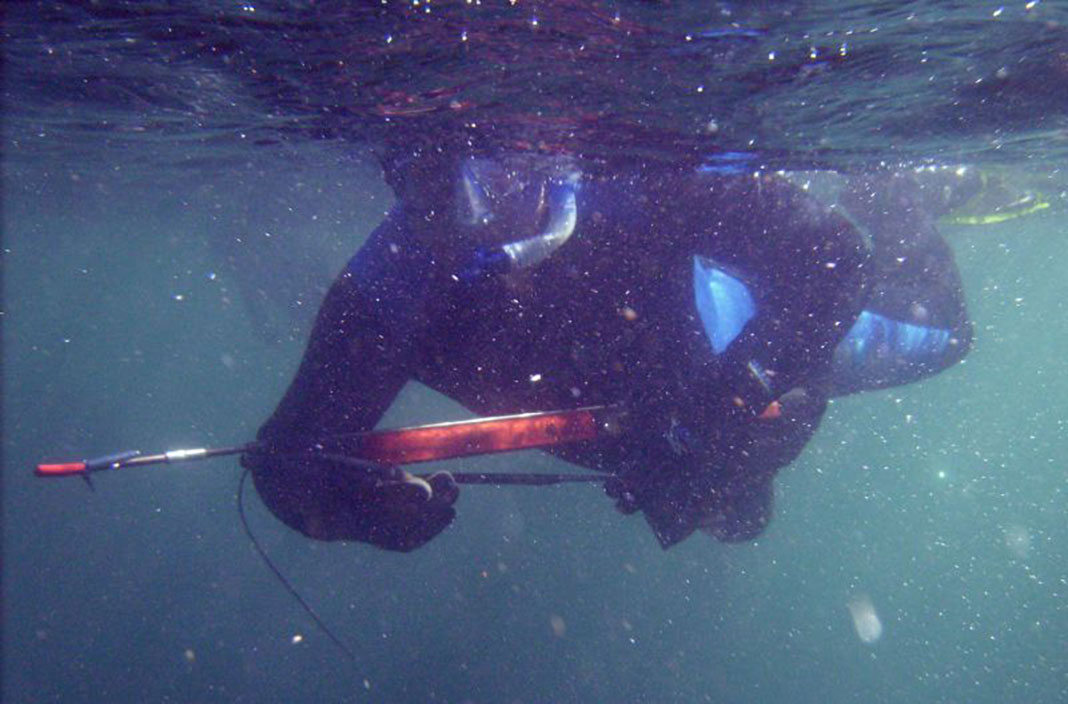
It turns out one of the pins on the shaft of my spear—the anchor point for the latex rubber bands—had snapped off on the rearmost band, causing the shaft to release erratically. Whoops. I reloaded the gun on a different pin, but didn’t see another striped bass in that location.
Next, I moved to a favorite tautog spot. Dropping down to 25 feet, I looked up into the surf zone. Against the rocks a large male “chinner” was inspecting me, a strange intruder in its territory. The fish was in perfect position and I put a holding shot right into his upper flank. I swam backward in the surf zone, letting line off the reel to keep a safe distance from the rocks.
As I moved backward, the fish dove down and tied my line to the rocks in the heavy surge. Only then did I realize my reel had jammed up. There was only 15 feet of line connecting me to the rocks below, and it was barely enough to get me to the surface. I didn’t want to let go of the gun and lose all three—GoPro, gun and fish.
I made several short dives, getting tossed around in the surf while trying to untangle the spear shaft and fish from the rocks. It was fruitless; the surge kept washing me away on the bottom. I was exhausted after holding onto my gun for ten minutes. I made one final dive to grab the spear shaft and cut the shooting line. I lost the fish and put the gun out of commission for the remainder of the day, but I was safe and sound.
It was a tough day of scouting, but I figured I was washing the stink off my gear a day early and would help me in the competition. I should have taken the hint and played it safe the next day.
Back to the Tournament
I finished some quick repairs to my gun and all the competitors lined up in their kayaks for the launch. The tournament began and I paddled with hard, fast strokes. Some of the other kayak-based spearos ribbed me, saying I only have two speeds in a kayak: trolling and full throttle.
With my new Adventure Technology Oracle Carbon paddle, I was leaving a wake by the time I left that harbor. I maintained my lead for the mile-long paddle out to my first location on the far side of the rock islands that make up Sakonnet Point. As I rounded the front of West Island, a 15–20 foot cliff greeted the open Atlantic. The winds on the front side were close to 15 knots and the median wave height was around 3–4 feet before feeling the shoreline.
Closer to the island, the waves rose to six feet before crashing against the rock face. I gave the surf zone plenty of space, anchoring my kayak at a depth of 40 feet along a bedrock shelf. I threw my fins and mask on, then swam for the area where I suspected striped bass would be holding.
My first few drops onto the rock reef were between 20 and 40 feet deep. Visibility was stirred up, ranging from 3 to 8 feet. I soon found the bedrock shelf that runs north to south. Small striped bass were swimming nearby, so I found a good rock and set up behind it.
The tournament began and I paddled with hard, fast strokes. Some of the other kayak-based spearos ribbed me, saying I only have two speeds in a kayak: trolling and full throttle.
I lay on the bottom with my gun pointed toward open water and the small bass began to circle around my position. This is typical behavior of interested fish—they don’t know if you are predator, prey, or just another creature that doesn’t pose a threat. Fish will often follow you in the hope that your activity will scare up an easy meal.
A minute passed as I sat in the circling school. Then I saw a dark shape approaching from the deeper portion of the rock reef, a tournament-sized striped bass between 15 and 20 pounds. It came in for a look and gave me a great broadside profile. I took the shot, hitting it directly above the pectoral fin and exiting through the gill plate on the other side.
Since it wasn’t a brain or spine shot, the fish still had the opportunity to run, stripping almost 30 feet of line off my reel before the injuries slowed it down. I collected the fish, dispatching it quickly with my dive knife, then opening the arteries behind the gills to bleed the fish and preserve the quality of the meat. I secured it to the kayak stringer and prepared to switch locations.
Trouble in the Surf Zone
I retrieved my kayak anchor and paddled parallel to the rock face, roughly 70 feet away from the south of West Island. In this spot, the bottom drops out fairly quickly and the waves won’t crest if they can’t feel the structure of the bottom. Relying on my paddling experience in the surf zone, I thought this was a relatively safe distance to maintain—or was it?
A four-foot, curling wave crashed over my kayak as I passed the southeastern point of the island. Having checked the charts after the ordeal, there are a series of submerged rock pinnacles that must have caused a cresting wave to form. The wave hit my starboard side, but fortunately I was able to remain upright and paddling.
At first I could feel water sloshing around in the tankwell and seating area. The water failed to drain after a few seconds and I realized it was on the inside of my hull. The Tarpon 140 is designed with one large interior compartment, so I knew it could completely lose buoyancy. I checked my hatches and found they were sealed, but air bubbles escaped from around the seams.
Wind and waves pushed me into the surf zone, so I paddled hard to escape. One problem: I was sinking. I didn’t know it at the time, but the wave had slammed into my dive flag, attached to an old ski pole seated in a flush-mount rod holder. The wave had hit with enough force to shear off the rod holder’s interior tube, leaving a 4-inch hole directly into my hull. Counting from the initial impact, it only took 30 seconds before my vessel was completely submerged. At this point I realized I was in trouble.
I have been in trouble and faced danger at sea before. I worked as a seagoing biologist aboard commercial fishing vessels in the North Atlantic for several years and have received extensive safety training for marine emergencies. In this case, I fell into the proportion of the population that is stunned when a disastrous event occurs.
Without understanding why I was sinking, I couldn’t assess my options until I was already in the water. By this time, the water and surf had conspired to unwind my anchor line and leave a treacherous tangle of rope in the water. I was almost immediately ensnared around my legs and waist.
The surging waves made it difficult to stay above water, so I took a large breath and let myself sink a couple of feet. Using my dive knife, I sawed at the rope that locked my ankles together. It became apparent that there were too many wraps to cut through. I freed my feet by shimmying the line down my legs and off my fins, then swam to the surface and took another breath.
I was closer to the rock face now and would be crushed against it, along with my kayak, if I couldn’t do something soon. I dropped my weight belt to increase buoyancy and grabbed the kayak’s bow handle to try and swim it away from the rocks. Even with elongated freediving fins—built for powerful, efficient strokes—I couldn’t make any headway with the partially submerged boat. Suddenly, a large wave began forming behind the kayak.
Bludgeoned by the Waves
I could feel the water rushing away from the rock face and the swell lifting the kayak higher in the air. This was bad. This was very bad. I let go of the boat and tried to kick away from the rocks, but it was too late. The classic, curling wave lifted the kayak over my head and dropped it directly on me.
The boat hit lengthwise, across my thighs and ribs, sending me underwater where I hit the rock face on my other side. The wave continued to drive the kayak into me, skidding my body along the rocks. It eventually rolled off, but not before crushing my right ankle. I knew I was hurt, but there was no pain. I don’t really remember the next few moments clearly, but my immediate goal was to not get hit by the kayak again. I wasn’t sure I could endure another hit like that.
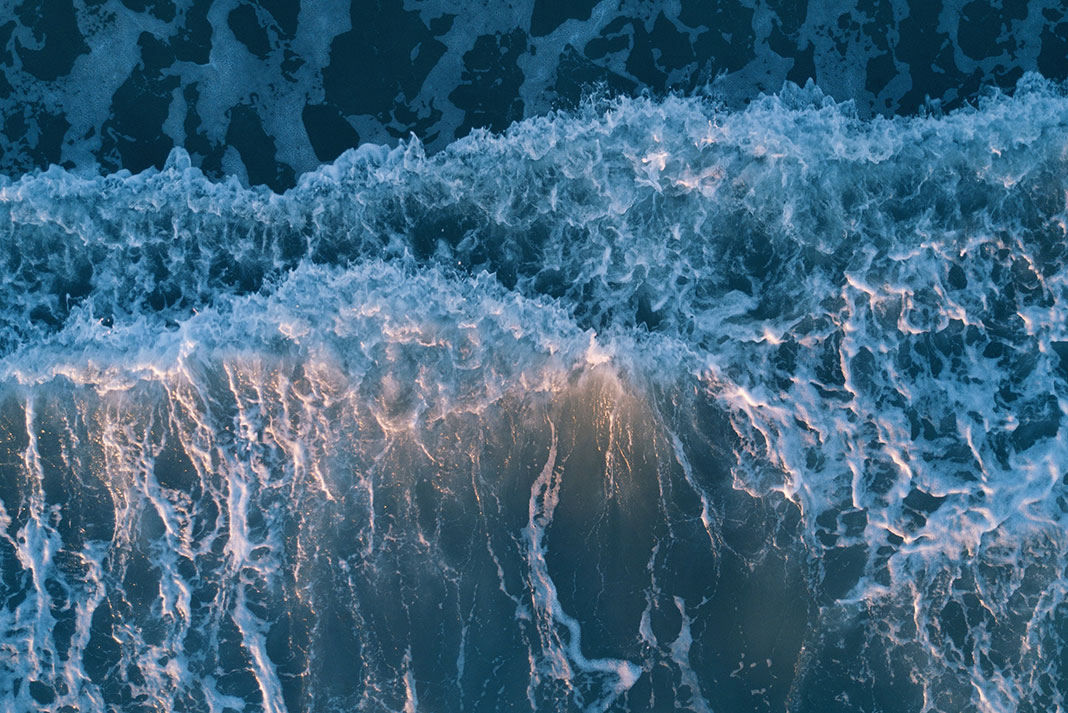
The next thing I remember was straddling the skyward-facing hull of my kayak as the waves washed it farther and farther up the rock face. Each wave wanted to tear me from my tenuous hold, but I held on for dear life. The wreck settled on the rock face’s highest point, held in place by a tangle of cord, line and equipment. It was still being jostled by the waves, but it wasn’t going anywhere.
I decided my best bet was to climb up and out of the tidal zone, then wait for the waves to recede. I climbed to a higher perch and paused to catch my breath. The initial danger was over, but what next? Assessing my condition, I found the wetsuit had held up well, but my ankles and feet were seriously cut. My ankle and ribs were also hurt, but I couldn’t tell how badly due to the lack of pain.
I don’t really remember the next few moments clearly, but my immediate goal was to not get hit by the kayak again. I wasn’t sure I could endure another hit like that.
Injuries aside, my kayak and equipment were still getting pulverized in the surf, so it was time to retrieve them—if I could. I had taken my fins off to climb the rock face, but unfortunately my dive boots had washed away in the sinking. The barnacles were sharp and I knew it was going to hurt.
I began the operation, removing gear and bringing it to higher ground. My phone and keys had luckily remained attached to an interior lanyard in a dry box. Next, I grabbed larger equipment, paddle and spearguns, followed by the smaller items. Finally, I grabbed the 36” striped bass that I had gone through all of this trouble to catch. That fish wasn’t going anywhere!
Assessing the Damage
After unloading the vessel I surveyed everything for damage. My favorite speargun, a Mares Viper Pro 100cm was bent along the barrel at 20 degrees from the impact. The GoPro was gone, and the paddle’s shaft was cracked but still in one piece. I also lost my mask/snorkel and dive knife. Between these losses and damage to the kayak, repairs would cost close to $1,000.
It may seem silly, but the price tag took the wind right out of my sails. I was defeated and deflated, I needed some moral support. It was at this point I called my father, with whom I file my float plans when I go spearfishing. As it turns out, this is the decision that came back to bite me.
I only spoke with my father for about five minutes. I wanted to tell him there was an accident and I was okay, and to get his input on how to save my kayak. I detailed my location, injuries and situation. I was still in disbelief—and likely shock—that all of this had happened so quickly. Then, as we were talking, I turned and saw my kayak floating away.
By removing the gear, I had lightened the kayak to the extent that a large wave was able to pick it up and wash it off the rocks. The water had drained while it was upside down, so the kayak was now buoyant again. It was floating away upright and gaining speed with each passing second. I told my father I would call him back after retrieving the boat, and painfully put my fins back on.
I swam about 200 yards to catch my Tarpon. The kayak had blown toward the lee side of the island, so I was able to beach it in a better spot away from the breaking waves. Walking back across the island to retrieve my phone, I picked my way past cormorants and nesting herring gulls. The whole operation took almost 15 minutes, and I found many missed calls on my phone—and one text. The text was from my father and it read: “We didn’t hear back from you, we called the fire department.”
The Search is On
Calling my father back, I learned that he had called the harbormaster, who suggested contacting the fire department. Little did I know the fire department, police, state environmental police and Coast Guard were all involved in the search and rescue operation. Four rescue vessels were launched and a helicopter was readied for takeoff. And as the emergency dispatch operator informed me, there was no way to cancel the operation until the response team made contact with me. If my tournament wasn’t already over, it almost certainly would be at this point.
Two of the vessels launched from the same harbor I had come from, but the requirements of a rescue operation meant it took them an hour to traverse what had taken less than 15 minutes to paddle. During this time, I climbed the highest rock and signalled with gestures and my dive flag.
When they arrived, the rescue vessel sent a swimmer to shore to confirm my name and reason for distress. I told him that I had already gotten myself out of danger and retrieved my gear, so I would refuse their services and paddle back myself. I was concerned with the potential cost of this rescue, plus immediate disqualification from the tournament if I accepted.
On my way back in with my buddy Greg, I had time to think of the initial miscalculation and unfortunate series of events that lead to this emergency response. The takeaway was pretty clear, and one that I already knew in the abstract. If you ever find yourself in a situation where you need rescue, make the decision to call as early as possible, because help doesn’t always arrive as quickly as you might expect.
Returning to shore, I disassembled and stowed my gear and kayak. It was a tough day on the water and I was happy to be back in one piece. We held the weigh-in on the beach with grilled food a-plenty and prizes in sight. My single fish weighed in at 18.4 pounds, securing a point total of 19.4.
I was the only one with a striped bass all day, so my score was enough to secure second place. A buddy of mine won with three tautog and two striped sea robins. While the ultimate comeback story would have been to win, I was happy to have placed after the whole ordeal.
Lessons Learned from a Kayak Spearfishing Accident
Know the conditions and know your vessels limits. Conditions can quickly change for the worse and become unmanageable. In the rough conditions and time crunch of the tournament I didn’t give myself nearly the safety buffer I should have.
When things do go wrong, recognize the emergency and act in a calm and appropriate manner. Once out of immediate danger, reassess your situation to develop the best course of action. Rescue isn’t always a snap of the fingers away—it can take a while to organize, launch and reach the person in distress. Be aware of this fact if you need help and make the call early in a life-threatening situation.
Lastly, be prepared for the risks you face as a kayaker and spearfisherman. I knew the risks, but I didn’t think I would be the one to end up in this situation. I hope you as readers are able to learn from my situation. Stay safe and paddle hard.
With high winds and poor visibility, the kayak spearfishing tournament hung in the balance. | Feature photo: Alex Post

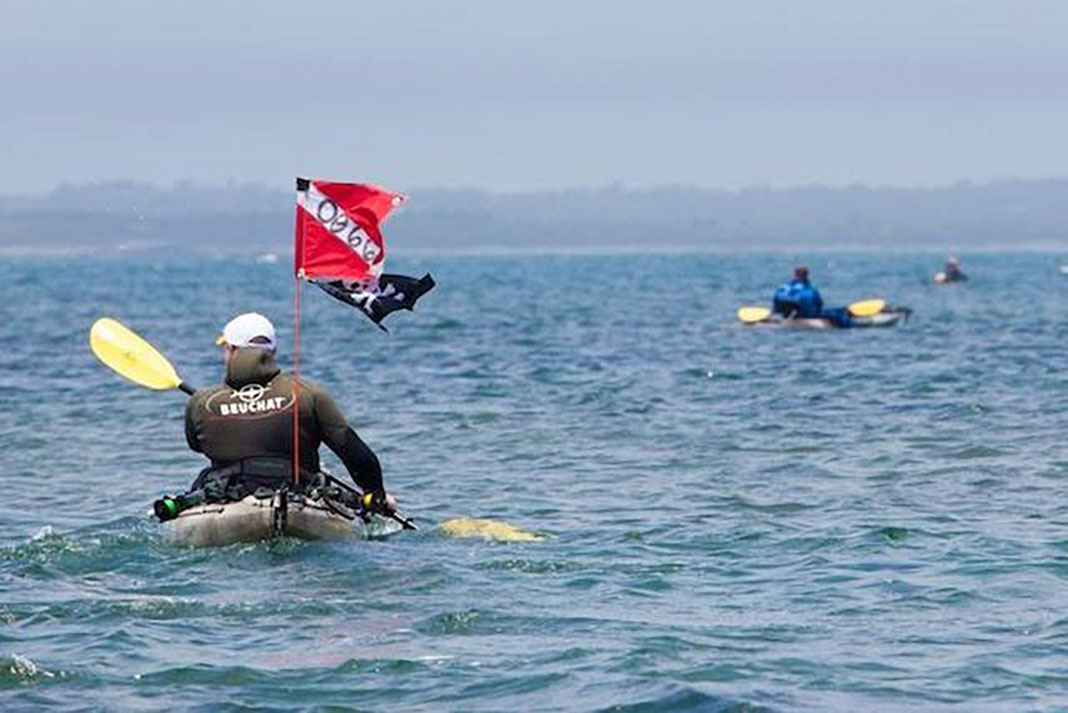
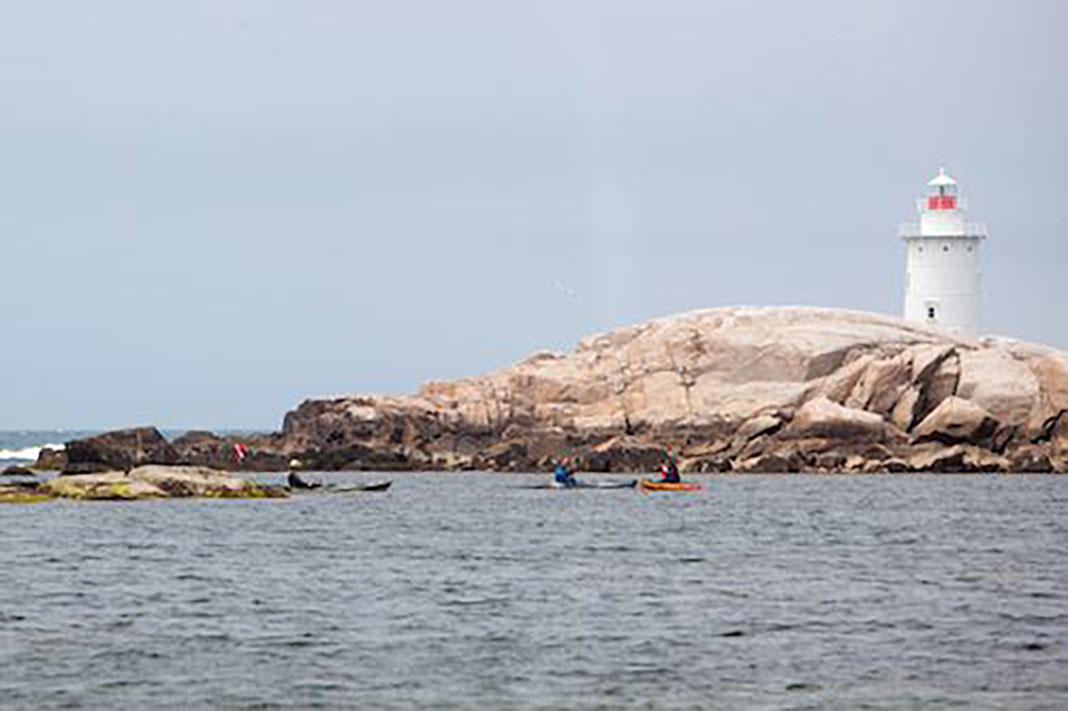
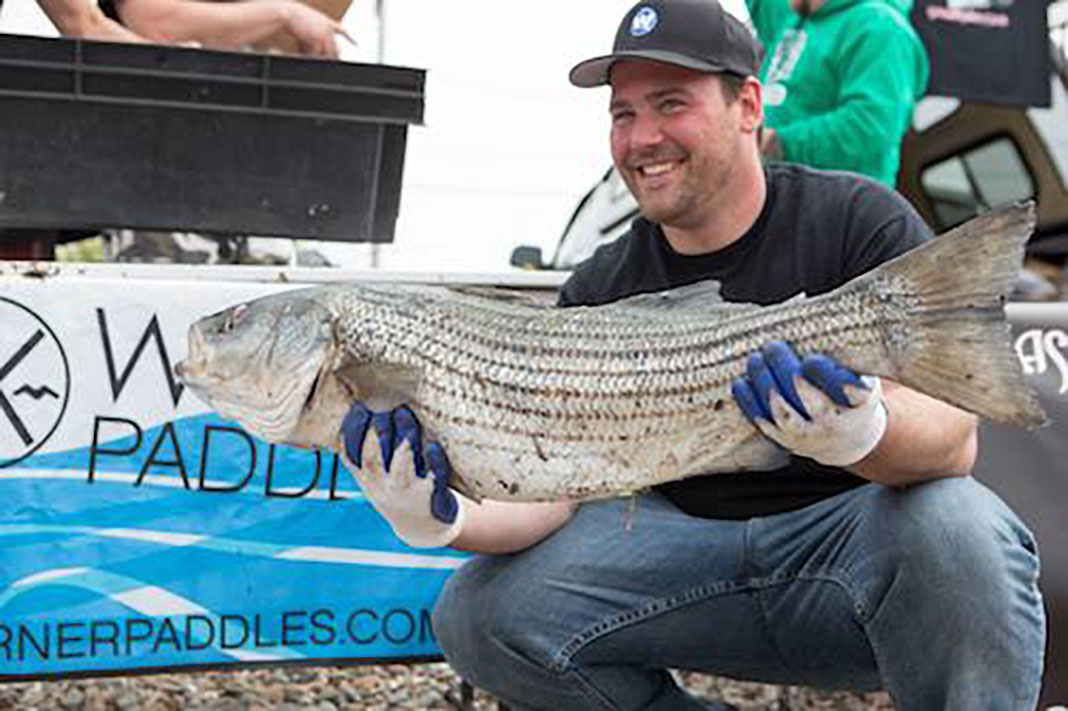
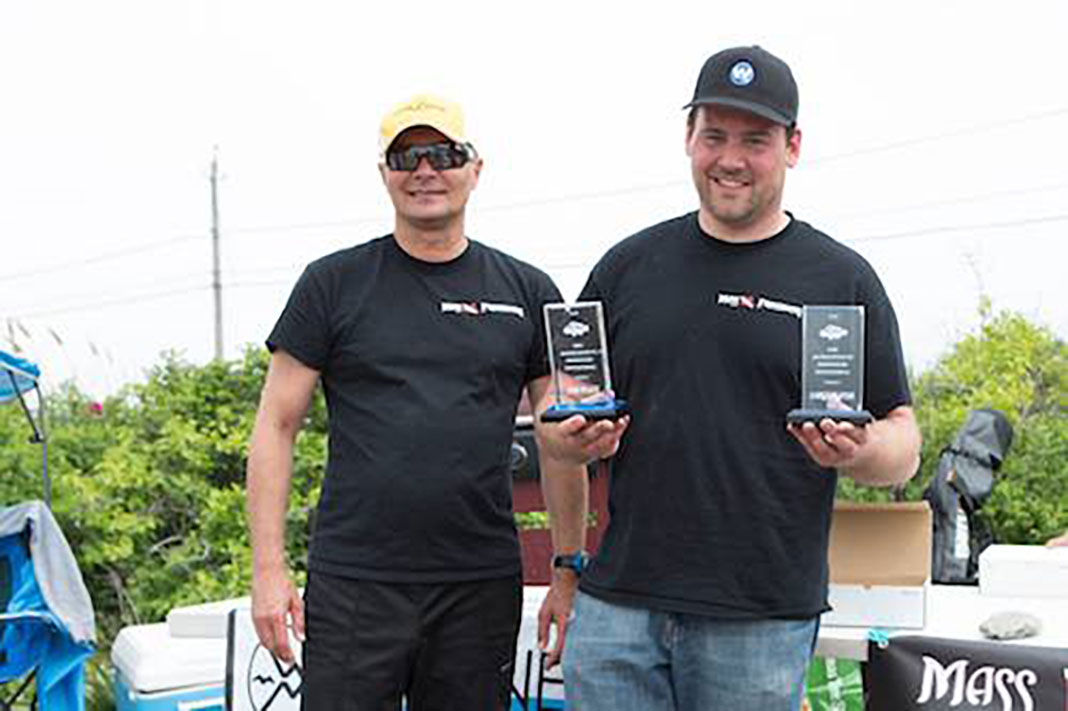
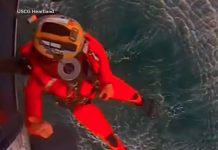
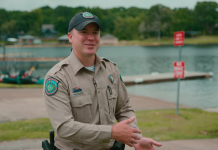
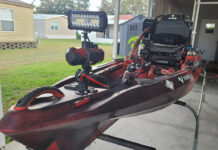
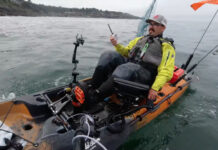
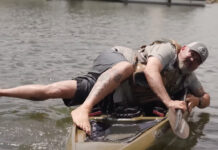

Dang – this got a little intense – was not expecting that!